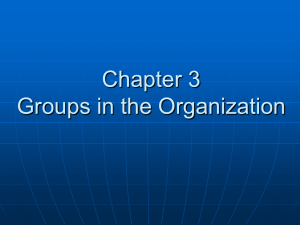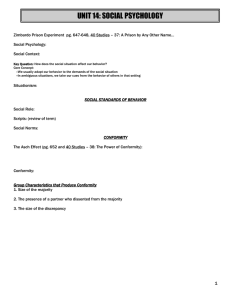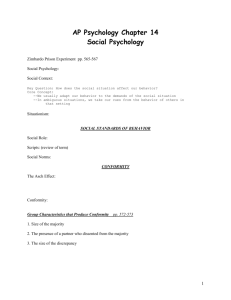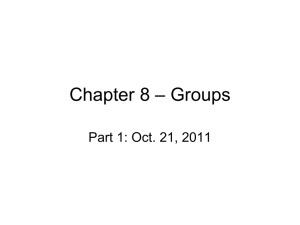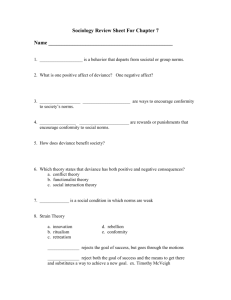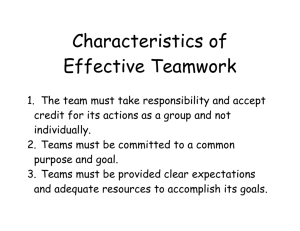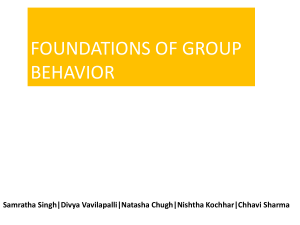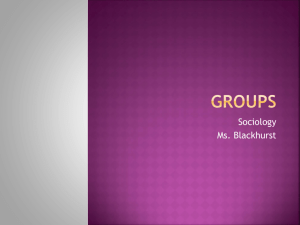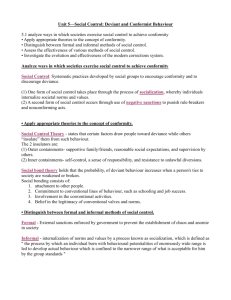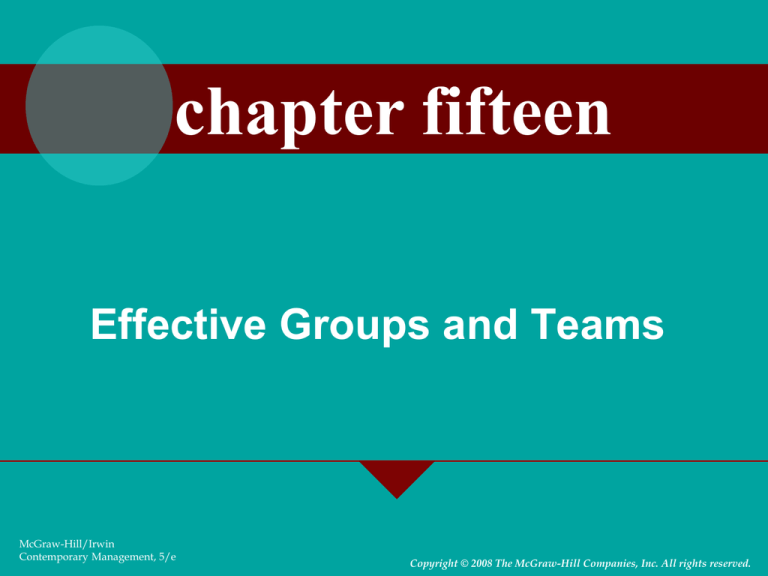
chapter fifteen
Effective Groups and Teams
McGraw-Hill/Irwin
Contemporary Management, 5/e
Copyright © 2008 The McGraw-Hill Companies, Inc. All rights reserved.
Defining and Classifying Groups
Why Do People Like Being a Part of a
Group?
• Security – to feel stronger and supported
• Status – to be viewed by others more favorably
• Self-esteem – to feel better about themselves
• Affiliation – to fulfill social needs
• Goal Achievement – pooling individual
talents may be necessary to meet a goal
Comparing Work Groups &
Work Teams
Q. When you hear the words “Group” and
“Team”, what differences come to mind?
Comparing Work Groups &
Work Teams
Work Group – A group that interacts primarily for
sharing information and making decisions to help
each member perform within their area of
responsibility
Work Team - a group whose members influence
one another toward accomplishment of objectives
and whose combined efforts is greater than the
sum of individual efforts (synergy)
.
Comparing Work Groups &
Work Teams
A Leader’s goal must be to turn their group
into a team!
Characteristics of Teams
• All teams are groups but not all groups are
teams.
• It takes time for members to learn how to work
together – there are stages.
• Teams benefit from synergy
• In teams, there is greater intensity with which
team members work together
• In teams, there is a presence of at least one
specific, overriding team goal or objective
15-7
The Stages of Group Development
Figure 15.4
15-8
Stages of Team Development
1. Forming – Establishing expectations, identifying
skills & personalities, and defining authority
2. Storming – Conflict emerges due to role
establishment and challenging each other
3. Norming – agreeing on roles, rules, and behavior
4. Performing – Focusing on solving problems and
meeting challenges. Until working through
steps 1-3, a team can’t get in a position to
succeed
5. Adjourning – Job is finished & team disbands
Team Diversity Advantages &
Disadvantages
Team A – Team members are very similar in
terms of age, race, and sex
Team B – Team members are widely diverse in
terms of age, race, and sex
Q. Which team would perform better in the
near term?
Q. Which team would perform better in the
long term?
Teamwork in the U.S.
Q. Growing up, was more importance
placed for you on individual
performance or teamwork?
Q. In what ways is teamwork taught,
encouraged, or rewarded in the U.S.?
Characteristics of Effective
Teams
Q. What are some Characteristics of
Effective Teams?
Characteristics of Effective
Teams
Trust among members!
Compensation and recognition rewards team
output
Individuals have confidence in all team members
Task conflicts rather than interpersonal conflicts
Loafing is self-regulated and not tolerated
Generally have less than 10 members & odd
numbers
Feel supported and appreciated by upper
management and secure about the group’s future
Characteristics of Effective
Teams
Individuals all prefer to be part of a team
Diversity will = greater effectiveness in the long
run
Shared Responsibility
Diversity of experience and abilities
Mix of Technical/Interpersonal/Conceptual skills
Positive personality traits across all team members
Individuals cooperate fully, but are still
competitive
Work is satisfying and challenging
Characteristics of Effective
Teams
Roles are assigned and everyone accepts their role
Individuals are flexible and cross-trainable
Good communication—from management to the
team as well as within the team
Leader is involved in team events and demonstrates
interest in team progress and functioning
Consciously avoid Groupthink and Groupshift
Groupthink and Groupshift
* As a member of a group, we may feel so
compelled or pressured to reach agreement, that
we hold back on ideas which would benefit the
group (and may ultimately be agreed upon).
Groupthink and Groupshift
* Usually the shift is towards riskiness, as in case
of failure, blame can be spread around!
Team Building
Steps for building productive teams:
1. Selecting the right Individuals - Group
member skills and personalities must fit.
2. Trust-building - Trust must be established
among group members and between the
group and management.
3. Enhancing group cohesiveness - Degree to
which group members are motivated to keep
the group together
McGraw-Hill/Irwin
© 2005 The McGraw-Hill Companies, Inc. All rights reserved.
Enhancing Group Cohesiveness
Ways to increase group cohesiveness:
1.
2.
3.
4.
5.
Make the group smaller.
Increase time members spend together.
Stimulate competition with other groups.
Give rewards to the group, not just individuals.
Physically isolate the group.
Teams vs. Individual
Decision Making
Q. What are the advantages of Team decision
making vs. Individual decision making?
Q. What are the disadvantages?
Team Decision Making
Advantages vs. Individual Decision Making
–
–
–
–
More complete information
Increased diversity of views
Increased acceptance of solutions
Generally results in higher quality of decisions
Disadvantages vs. Individual Decision Making
–
–
–
–
More time consuming
Pressure to conform can lead to suboptimal decisions
Domination by one or a few members
Potential for Groupthink and Groupshift
Group Size
• Advantage of small groups
– Interact more with each other and easier to
coordinate their efforts
– More motivated, satisfied, and committed
– Easier to share information
– Better able to see the importance of their
personal contributions
15-22
Group Size
Advantages of large groups
• More resources at their disposal to achieve
group goals
• Enables managers to obtain division of labor
advantages
•
•
•
•
Disadvantages of large groups
Problem of communication and coordination
Lower level of motivation
Members might not think their efforts are really
needed
15-23
Group Roles
Group Roles - The set of behaviors and tasks
that a group member is expected to perform
because of his or her position in the group.
• In cross-functional teams, members are
expected to perform roles in their specialty.
• Managers should clearly describe expected
roles to group members when they are
assigned to the group.
• Self-managed teams may assign the roles to
members themselves.
15-24
Group Leadership
• Effective leadership is a key ingredient in high
performing groups, teams, and organizations.
• Formal groups created by an organization
have a leader appointed by the organization.
• Informal groups that evolve independently in
an organization have an informal leader
recognized by the group.
15-25
Group Norms
Group Norms - Shared guidelines or rules for
behavior that most group members follow
– Managers should encourage members to
develop norms that contribute to group
performance and the attainment of group goals
15-26
Conformity and Deviance
• Members conform to norms to obtain rewards,
imitate respected members, and because they
feel the behavior is right.
• When a member deviates, other members will try
to make them conform, expel the member, or
change the group norms to accommodate them
(evolve as a group)
• Conformity and deviance must be balanced for
high performance from the group.
• Conformity creates harmony and productivity,
while Deviance allows for new ideas in the group.
15-27
Balancing Conformity and
Deviance in Groups
Figure 15.5
15-28

